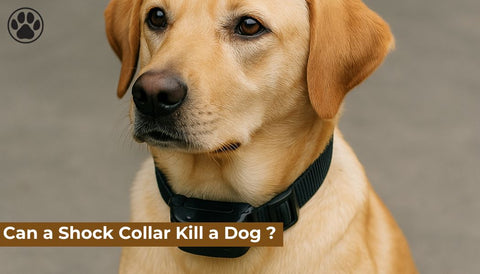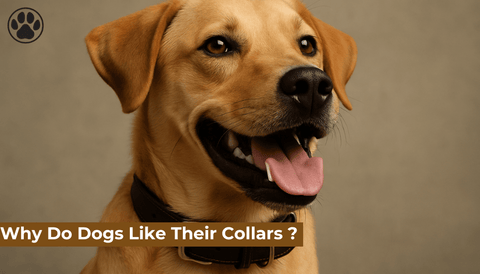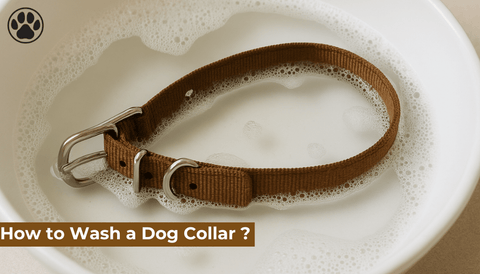
How to Measure Dog Collar ?
of reading - words
Choosing the right dog collar is essential for your pet’s comfort, safety, and style. Whether you’re shopping for a daily collar or a special occasion accessory, getting the right size is crucial. An ill-fitting collar can cause discomfort or even injury. In this guide, we'll walk you through exactly how to measure a dog collar the right way—step by step.
Why Measuring Your Dog’s Neck Matters
A collar that’s too tight may cause choking, skin irritation, or fur loss. A collar that's too loose may slip off, putting your dog at risk, especially outdoors. By learning how to measure a dog’s neck, you're ensuring a secure and comfortable fit, tailored to your pet’s unique shape.
What You Need Before Measuring
To measure a dog collar, you won’t need any fancy equipment. Here’s what to gather:
-
A soft measuring tape (like those used in sewing)
-
Your dog’s current collar (optional)
-
A treat or two to keep your pup still
If you don’t have a measuring tape, a string and a ruler can also work.
How to Measure Dog Collar Size Step-by-Step
Step 1: Find the Right Spot on the Neck
Place the tape around your dog’s neck where the collar would naturally sit—typically mid-neck, between the head and shoulders. Make sure it’s not too high (near the ears) or too low (near the chest).
Step 2: Use the “Two-Finger Rule”
While holding the tape snugly around the neck, slide two fingers between the tape and your dog’s skin. This ensures the collar will be tight enough not to slip off but loose enough not to constrict. Note the measurement in inches or centimeters.
Step 3: Match the Size to the Collar Chart
Once you have your measurement, consult the sizing chart of the brand you're buying from. Most brands group their dog collars into ranges like small (8"–12"), medium (12"–18"), and large (18"–24"). Always round up if your measurement falls between sizes.
Special Notes for Growing Puppies
If your dog is still growing, you’ll want to buy an adjustable collar with extra space for growth. Recheck the fit every few weeks. Puppies can outgrow collars quickly, so don’t forget to update the measurement regularly.
Consider Your Dog's Breed and Neck Type
Different dog breeds have different neck structures. For example:
-
Greyhounds and Whippets have slim necks and may need wider collars for security.
-
Bulldogs or Pugs often have short, thick necks and benefit from breathable materials.
-
Long-haired breeds may require longer collars to fit over thick fur.
Try One from Our Dog Collar Collection
Looking for a reliable, stylish option? Explore our Dog Collar Collection designed with comfort, durability, and aesthetics in mind. From classic leather to modern reflective designs, our collars suit all sizes and breeds—perfectly measured for a secure fit.
Common Mistakes When Measuring Dog Collars
Ignoring Breed-Specific Needs
As mentioned, not all dogs are built the same. Ignoring your dog’s unique shape can lead to discomfort.
Not Using a Flexible Measuring Tape
Using a rigid ruler or measuring device will yield inaccurate results. Always use a flexible tool.
Measuring Over Fur Without Adjusting
For thick-coated breeds, account for the fluff. Compress the fur slightly when measuring to avoid buying a collar that’s too tight.
When to Re-Measure Your Dog
Dogs change size. Whether it’s weight gain, weight loss, or just growing older, re-check your dog’s collar fit every few months. This is especially important after a haircut or grooming session for long-haired dogs.
FAQ: Measuring Dog Collars
How tight should a dog collar be?
It should be snug enough that it doesn't slip over the head, but loose enough to fit two fingers comfortably between the collar and your dog's neck.
What size collar does my dog need?
It depends on the neck measurement. Most manufacturers offer sizing charts. Always measure before buying, even for breeds with standard sizes.
Can I use my dog’s old collar to measure?
Yes, if the old collar fits well. Lay it flat and measure from the buckle to the hole you use most often.
Should I buy a collar that adjusts?
Adjustable collars are great for growing dogs or for seasonal changes in fur thickness. They offer flexibility and better long-term fit.
What if I’m between sizes?
Go for the larger size and make sure it’s adjustable. A collar that’s too tight is dangerous, while one that’s too loose can be adjusted.
Final Thoughts
Knowing how to measure dog collar size correctly is one of the simplest ways to ensure your pet’s safety and comfort. It’s a small step that makes a big difference in their daily life. With just a few minutes of effort, you can avoid common sizing mistakes and make smarter buying decisions.
If you're ready to upgrade your dog’s collar, check out our expertly curated Dog Collar Collection. We offer a variety of stylish and functional collars tailored to all dog sizes and needs—because every dog deserves the perfect fit.




